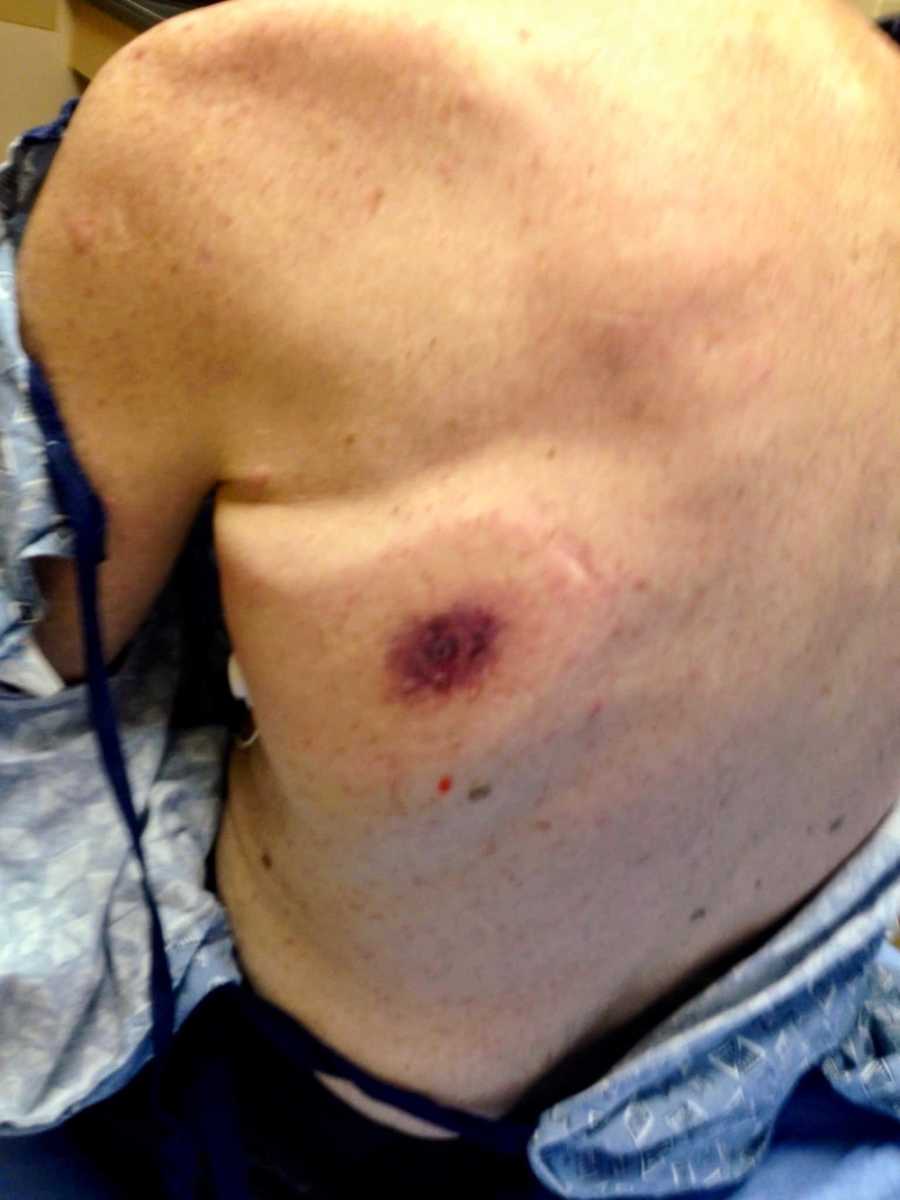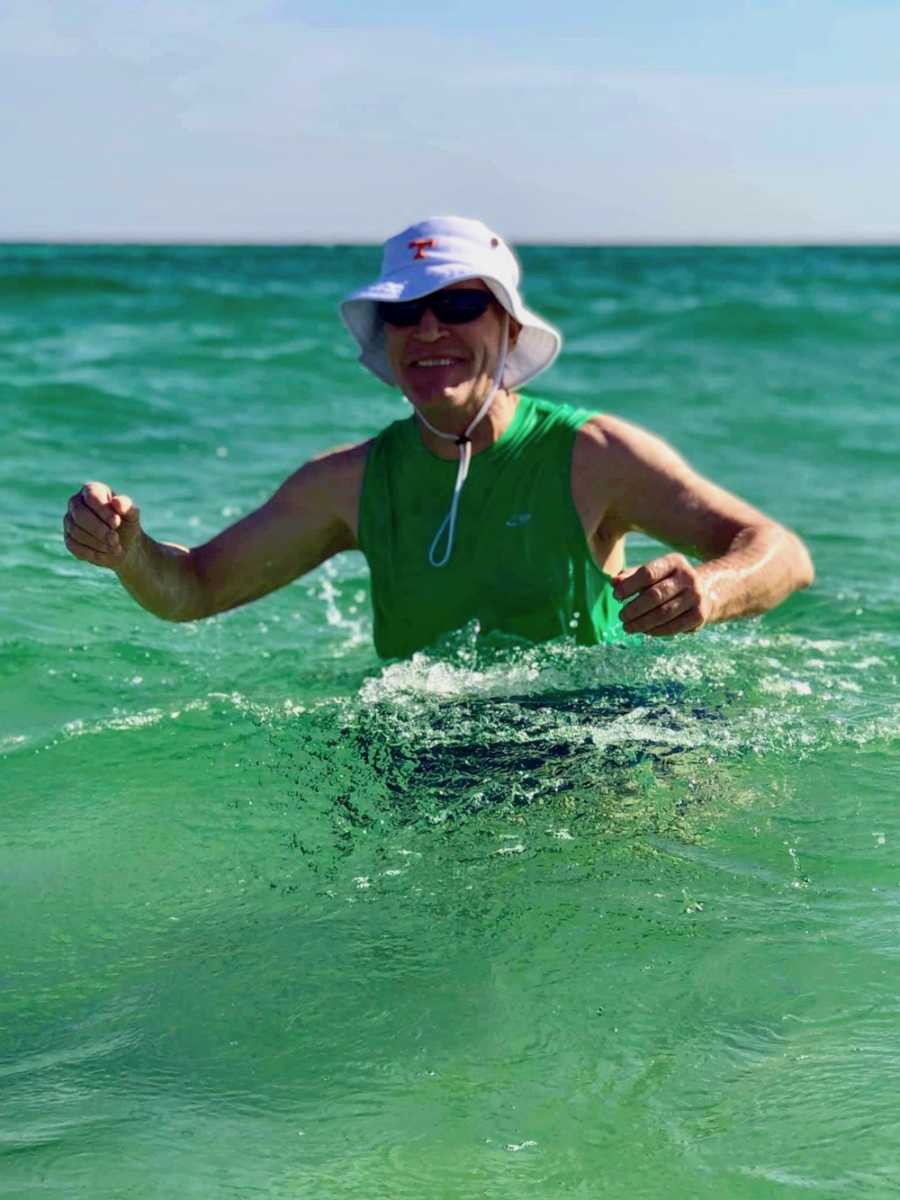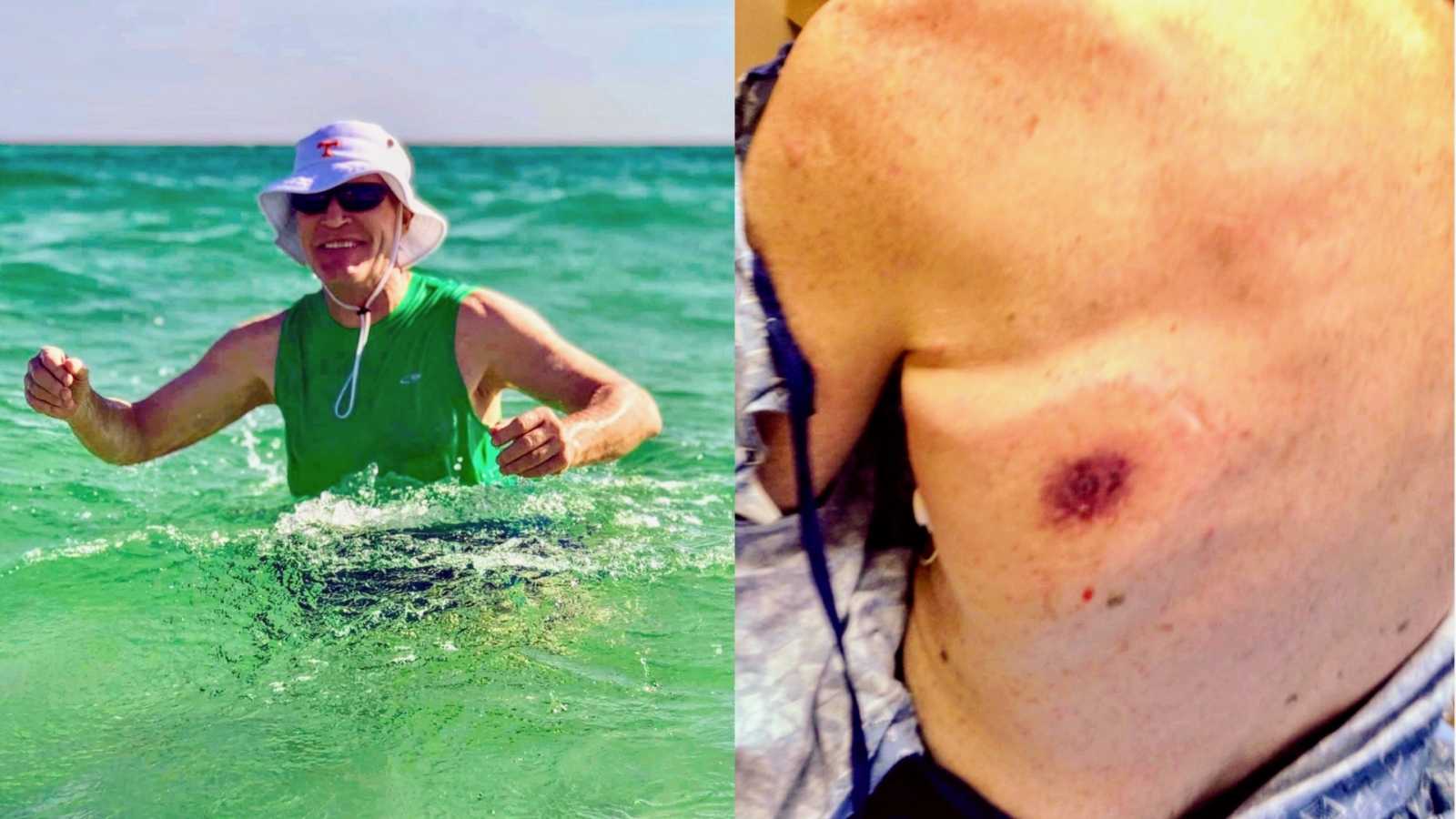“Flesh Eating Bacteria sounds like an urban legend. Let me assure you that it is not. It took my Dad’s life. This is so raw and personal to me that I did not want to write about it, but if I can help one person, then it is worth it.
There is not enough education out there about the bacteria in the water. There needs to be signs posted at every beach, every city and state park, and every bayou stating that ‘due to naturally occurring bacteria in the water people with open wounds or compromised immune systems should not enter’. I knew about the open wounds. Many people I’ve talked to don’t. They think saltwater is good for cuts. Saltwater alone may be, but the bacteria enters through cuts.
My Dad had cancer; therefore, his immune system was compromised. He’s battled cancer for many years and has been in the water several times, so it didn’t seem like a risk. My parents were coming down to stay with me in Florida about a week after the post about a 12-year-old girl contracting bacteria that turned into necrotizing fasciitis (flesh eating bacteria) in Destin started circling around. I didn’t want to believe that. My family loves being in the water.
Our county, Okaloosa County, posted an article titled ‘Rumor Control’ in response to the post which seemed to diffuse everyone’s fears. The girl had a cut on her leg, so I felt like it reinforced to me not to go in with a cut. I researched a little. When my parents got in town, I was fanatical about Neosporin and liquid Band-Aid. My Dad didn’t have any open wounds. He had a couple places that were practicality healed small scratches on his arms and legs that I made sure were super sealed up. My mom religiously sun-blocked him. We were taking precautions and we were good, so I thought.
We had a blast. We were out in the bay on the boat near Crab Island, went to the beach in Destin twice, splashed around Turkey Creek, swam in Boggy Bayou, in our pool and then on Friday we spent the day at Rocky Bayou riding jet skis and throwing the ball around in the water. We left around 4:00 p.m. Daddy stayed up late Friday night and watched a movie. He was happy and talkative, seemed to feel fine as he did all week. About 4:00 a.m. Saturday morning, 12 hours after we were in the water, he woke up with a fever, chills and some cramping.
My parents had planned to head back to Memphis that morning anyway and my mom wanted him to be near his doctors to have him checked out. He’d been sick before and they knew his history, so it seemed like the best thing to do. He got worse on the way home. His legs started to hurt severely. He was becoming extremely uncomfortable. My Dad has been through a lot and he is not a complainer, so he had to have been in a lot of pain to vocalize it.
They got to the hospital in Memphis around 8 p.m. They took him back immediately. As they were helping him get changed into his hospital gown, they saw this terribly swollen black spot on his back that was not there before. My mom sent me a picture of it, and it felt like someone sucker punched me.

I called and asked if it was actually black (because sometimes color is off in a photo) and she said it was black. I never saw a cut on his back and neither did she. We certainly hadn’t seen this spot. I told her to tell them he was in the water in Florida and it was necrotizing fasciitis. She told everyone that came in the room.
One person told her the media had blown that out of proportion. Others said it was staph. They would not biopsy it. They did start him on IV antibiotics. The black spot had doubled in size. A new one was starting to pop up. His arms were becoming blotchier by the minute and he was in a great deal of pain. Some of the nurses said they’d never seen anything like it. At 1 a.m. he became septic and they moved him into ICU. He coded shortly after and they had to bring him back. My dad had a lot of medical issues, but heart was not one of them. They had to intubate him. He coded again.
They said his organs were too damaged and his blood was too acidic to sustain life. He was gone by Sunday afternoon. Less than 48 hours after getting out of the water feeling great, the bacteria had destroyed him. We got lab results today: Vibrio vulnificus which manifests into necrotizing fasciitis (flesh eating bacteria) ultimately leading to sepsis. Vibrio vulnificus is a bacteria that is transmitted by eating undercooked shellfish or through an open wound. There were no bacteria warnings at any beach or park we went to. They do post advisories for high bacteria but there were none.
I would never have taken my Dad in the water if there was a bacteria advisory but it would have been because I didn’t want him to get a stomach virus not because I thought it would kill him. (I realize there can still be bacteria without an advisory – just making the point that there was not a posted high level) I knew you shouldn’t swim with an open wound, but I didn’t realize he shouldn’t be in the water with his immune system. I feel like I should have known and that is something I will live with for the rest of my life. If I would have done more research, I would have but I don’t think the general public realizes it either. I do believe if there was a simple sign posted about the risk of swimming with an open wound or an immune disorder, we wouldn’t have let him get in.
I am absolutely not trying to scare people from the beach or swimming. I love the water and so did my Dad. People do need to know how to be more cautious and how to recognize symptoms. There is information out there, but I didn’t find it all until it was too late. I don’t want this to happen to anyone else. I don’t need anyone to tell me what we should or should not have done. We already know. It was too late for us. Please just pass this on so it can help someone else.”

This story was written by Cheryl Bennett Wiygul. The article originally appeared here. Submit your own story here, and subscribe to our best stories in our free newsletter here.
Do you know someone who could benefit from this story? Please SHARE on Facebook and Instagram to let them know a community of support is available.




